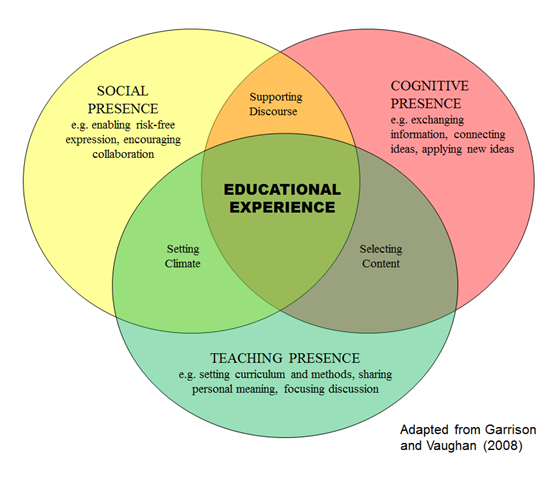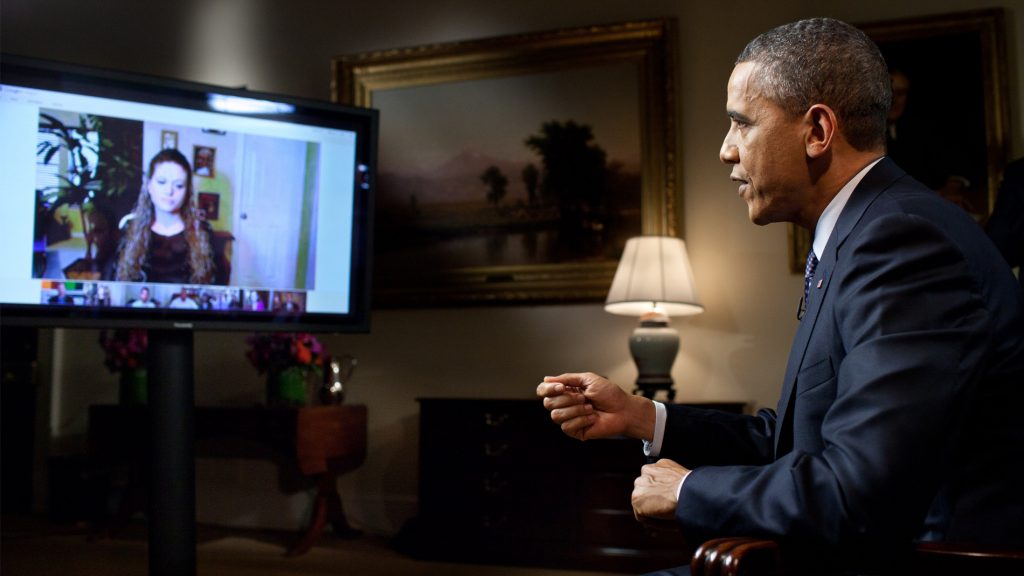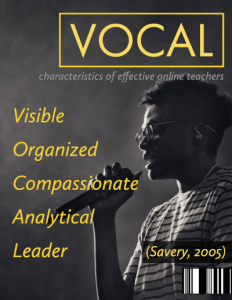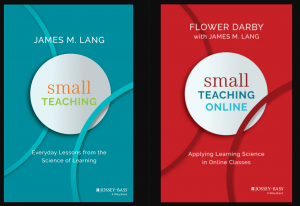Best Practices in Synchronous Virtual Classes
In recent years, the increase in bandwidth and faster computer technology has created more opportunities for e-learning to include synchronous (at the same time) virtual classrooms.
Some examples of Synchronous Virtual Learning:
– Web Conferences (Zoom, Google Hangout, Skype)
– Virtual Live Classrooms (Canvas “Big Blue Button”, Adobe Connect)
– Chat rooms (Canvas “Chat”, IM)
– Live Collaborative Documents (Google Docs, Office 365, pin boards, etc.)
In general, synchronous virtual classes are best at increasing the essential “social” presence of your class.

The three presences of a “Community of Inquiry” taught by Garrison, Anderson, & Archer 1999 are social, cognitive (the material) and teaching (the direction/structure). Synchronous classes also reduce what is considered the “transactional distance” (Moore, 1993) that exists in every class, virtual or face to face, in the student-teacher dialog. Students thereby feel a stronger sense of community, sense of accomplishment and course satisfaction.
Synchronous Virtual Classes are great for:
– Making personal connections between the students and student to teacher
– Increasing motivation for work
– More connection to the course (less transactional distance)
– Increasing engagement in the material
– Less complex discussion
– Instant feedback (verbal and non-verbal)
– Light-load Co-operation (especially in smaller groups)
– Understanding both content and logistics
– Planning activities
Not as good for:
– Deep critical thinking
– Flexibility / Accessibility (everyone has to show up at the same time)
– Group work (asynchronous is better)
– Final exam mastery
Teaching Strategies:
One advantage regarding synchronous classes is that the teacher’s skillfulness in leading discussions in the face to face classroom (critical inquiry, co-operative debate, Socratic learning, immediate feedback, humor, etc.) can be used naturally in the virtual classroom. It is more difficult to build these components into asynchronous learning. Clark (2005) suggests some additional strategies (parenthesis are added notes):
– Maintain a lively pace (I was in a web conference the other day and it was painfully slow and awkward because no one was taking the lead to move it along)
– Visualize the content (can you add any pictures / slides to help direct conversation?)
– Incorporate frequent participant responses (polls, hand raises, everyone saying something…)
– Use small group break-out rooms (not necessary for an already small class)
– Maintain a shorter class – Students feel more positive about the interactions and are more engaged if classes are 60 – 90 minutes at most
End goal:
We want students to connect and understand the material together, that is, to “make meaning” using the social co-construction of knowledge (Brierton, Wilson, Kistler, Flowers, & Jones, 2016). Ideally a synchronous virtual class would be an online space that will foster a true community of inquiry: “a cohesive and interactive community of learners whose purpose is to critically analyze, construct, and confirm worthwhile knowledge” (Power & St-Jacques, 2014, p. 683).
Resources:
Brierton, S., Wilson, E., Kistler, M., Flowers, J., & Jones, D. (2016). A Comparison of Higher Order Thinking Skills Demonstrated in Synchronous and Asynchronous Online College Discussion Posts. NACTA Journal, 60(1), 14-21.
Clark, R. (2005). Harnessing the virtual classroom. T AND D, 59(11), 40.
Huang, X. S., & Hsiao, E. L. (2012). SYNCHRONOUS AND ASYNCHRONOUS COMMUNICATION IN AN ONLINE ENVIRONMENT: Faculty Experiences and Perceptions. Quarterly Review of Distance Education, 13(1), 15-30,49-50.
Martin, F., & Parker, M. A. (2014). Use of Synchronous Virtual Classrooms: Why, Who, and How? Journal of Online Learning and Teaching, 10(2).
Moore, M. G. (1993). Theory of transactional distance. Theoretical principles of distance education.
Power, M., & St-Jacques, A. (2014). The Graduate Virtual Classroom Webinar: A Collaborative and Constructivist Online Teaching Strategy. Journal of Online Learning and Teaching, 10(4).
Yamagata-Lynch, L. C. (2014). Blending online asynchronous and synchronous learning. International Review of Research in Open and Distance Learning, 15(2).



